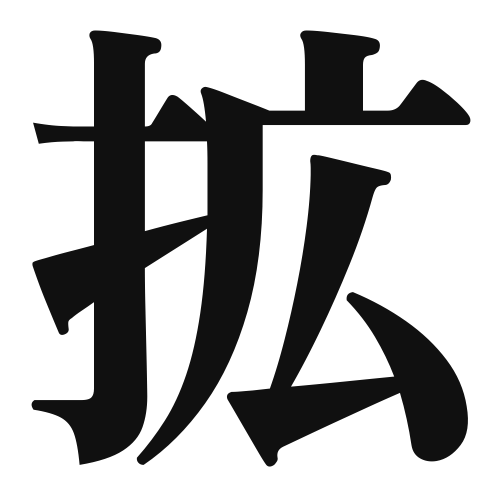1. Overview of Meaning
The kanji “拡” (kaku) means “expand” or “enlarge.” It conveys the idea of increasing size, scope, or influence.
2. Formation and Radical
Formation of the Kanji: The kanji “拡” is a compound character (会意文字) that combines the elements of “手” (hand) and “各” (each). This suggests the action of using hands to expand or spread something.
Radical: The radical of “拡” is “手” (shǒu), which relates to actions performed by the hand.
3. Examples of Usage
Common Words and Phrases: Some frequently used words that include “拡” are:
- 拡大 (kakudai) – enlargement
- 拡張 (kakuchou) – expansion
Example Sentences in Daily Conversation:
- このプロジェクトは市場を拡大することを目指しています。
- (This project aims to expand the market.)
4. Synonyms and Antonyms
Similar Kanji: A similar kanji is “広” (hiro), which means “wide” or “broad.” While both suggest an increase in size, “拡” emphasizes the action of expanding, whereas “広” focuses on the state of being wide.
Opposite Kanji: The antonym of “拡” is “縮” (shuku), which means “shrink” or “contract.” This represents a decrease in size or scope.
5. Cultural and Historical Background
Relation to Japanese Culture: The concept of expansion is significant in various aspects of Japanese culture, including business and technology, where growth and development are often emphasized.
Proverbs and Idioms: One relevant proverb is “拡大解釈” (kakudai kaishaku), which means “broad interpretation.” This reflects the idea of expanding the meaning or understanding of something beyond its original context.
